A medical regulation expert says consumers should be demanding more information from app developers and vendors, to determine whether certain health-related apps are required to meet medical device regulatory criteria.
Regulatory changes for software medical devices, also known as Software as a Medical Device (SaMD), and medical devices that include software came into effect in February 2021, with a transition period ending only recently, in November last year.
Dr Lee Walsh, Principal and Managing Director at Platypus Medtech Consulting says SaMD is not a new concept, but the idea of regulating it remains somewhat controversial.
“Software as a medical device is not new technology, we’ve been seeing it used for decades in medical equipment. In fact, some of the first uses of computers were in medicine, so we have had medical device software for a long time, even if we were not calling it that.”
“We also now have many medical devices that are not themselves software, but include software as a component. Essentially if something involves a screen or computer processing, it is likely to be using software.”
“However, what has changed is the significant advances in mobile phone technology which means suddenly everyone has access to a powerful computer processor, making software as a medical device far more accessible.”
“We’ve also had a big change in how software is developed and distributed. In 2002, when the medical device framework was introduced, software was old technology, but it was still made by large companies and distributed on physical disks. Now anyone can make software and distribute it easily through an app store or website.”
This includes the increasing development of SaMD apps.
Dr Walsh says apps that simply provide health or medical information or are used as a tool to manage a healthy lifestyle are not required to be included in the Australian Register of Therapeutic Goods (ARTG).
“However, apps that have the intended purpose of diagnosing, monitoring, predicting or treating disease, injury or disability, claim to prevent disease, or control or support conception for example, must be registered.”
Examples include baby movement apps, apps that track a person’s health information and analyses it to diagnose diabetes, or provide a percentage risk of the user having diabetes, or software that analyses skin images to screen for melanoma.
Dr Walsh says the regulations exist to prevent harm to the end user. “We’re not just talking about physical harm. Software based medical devices could potentially pose other harms if not regulated correctly. Often this is a risk of missing a diagnosis (false negative) or relates to the management of personal medical records or identification data.”
Dr Walsh says users should be demanding more information and asking questions if they answer yes to any of the following;
Is the app or software assisting to manage my health and/or condition? Has the app or software been recommended by a doctor or health practitioner?
- Is the app or software making health claims?
- Is the app or software being used to diagnose a particular condition?
- Is the app asking me to provide information about my medical history or personal health?
Dr Walsh says while the ARTG is publicly accessible, users should also be asking questions of platforms selling or promoting the apps.
“The public has a role to play in reporting illegal apps and products and assisting the Government to stay on top of this issue. In practice, customers will always have more visibility what health app are being sold than the Government.”
“If consumers are demanding more information and not using software as a medical device that isn’t registered, it sends a clear message to developers.”










